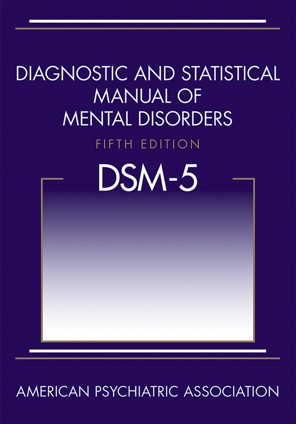 A new edition of the psychiatric “bible” will be released May 17, arriving on a wave of controversy that may have a profound influence on children’s mental health care in the United States, particularly around the diagnosis and treatment of autism and attention deficit hyperactivity disorder.
A new edition of the psychiatric “bible” will be released May 17, arriving on a wave of controversy that may have a profound influence on children’s mental health care in the United States, particularly around the diagnosis and treatment of autism and attention deficit hyperactivity disorder.
The fifth edition of the Diagnostic and Statistical Manual of Mental Health Disorders (DSM-5) is the first major update of the American Psychiatric Association’s (APA) clinical guidebook in almost 20 years. The DSM-5 expands and alters the diagnosis criteria for several disorders, and in some cases, introduces definitions of “new” psychiatric disorders.
The influence the DSM-5 has on children’s services could be extensive, because its diagnostic criteria are the nation’s most commonly used for identifying and treating mental disorders. Changes in diagnostic criteria, and especially mental disorder definitions, may alter the eligibility for some children to receive specialized education in school or limit certain treatments pediatricians may provide for younger patients.
The two most controversial changes to the DSM-5 have to do with the diagnostic criteria for autism and attention deficit hyperactivity disorder (ADHD). Under the new guidelines, several individual disorders, such as Asperger’s syndrome, have been consolidated into a single autism spectrum disorder (ASD). Due to the new categorization, children with ASDs that are rooted mostly in communication difficulties or repetitive behavior may be reclassified as communication disorders, while some experts believe the single spectrum categorizations will leave systems unsure of whether a child meets “significant” clinical levels.
Dr. Michael J. Morrier, assistant director at the Emory Autism Center, said that since states have fluctuating definitions of autism eligibility, the new DSM-5 standards could result in some young people potentially losing their access to services.
“Some states right now, in order to qualify for that eligibility, you have to have a diagnosis of autistic disorder,” he said. “So since they’re getting rid of that, how are they going to do that?”
“One of the biggest changes is going to be having people really understand that autism spectrum disorders [fall within a] range, and it’s not these different subtypes anymore,” Morrier continued. “Someone with high IQ and a lack of social skills is going to have the same diagnosis as kids that have intellectual disabilities and those same social skills problems.”
Also under the new DSM-5 criteria, children can be given ADHD diagnoses if they demonstrate certain traits before turning 12. In the previous version of the DSM, the cut off for ADHD diagnoses was 7 years old.
“Changing the age, I think it’s just going to delay when kids get identified and served,” Morrier said.
The most publicized criticism of the DSM-5 changes came from Dr. Thomas Insel, director of the National Institutes of Mental Health, who in April said that the psychiatric “bible” shared more commonalities with a dictionary.
“The strength of each of the editions of DSM has been ‘reliability,’” he wrote in a blog post last month. “Each edition has ensured that clinicians use the same terms in the same ways. The weakness is its lack of validity.”





























